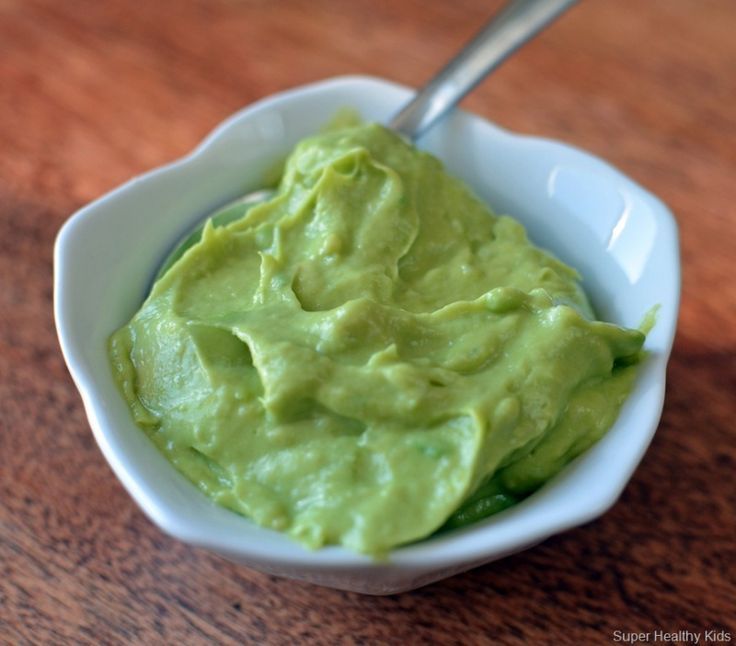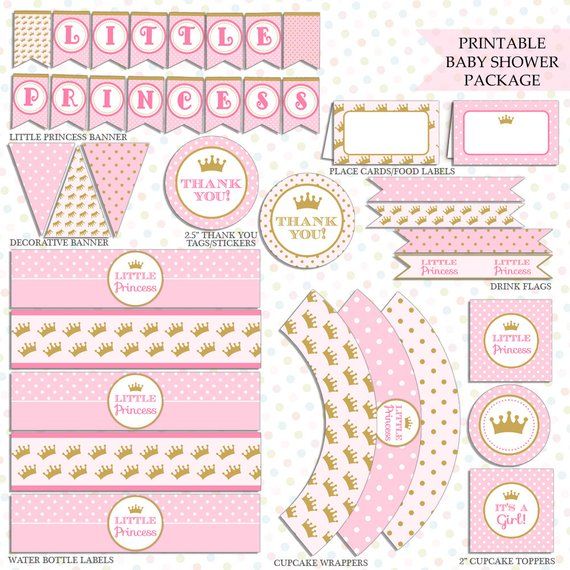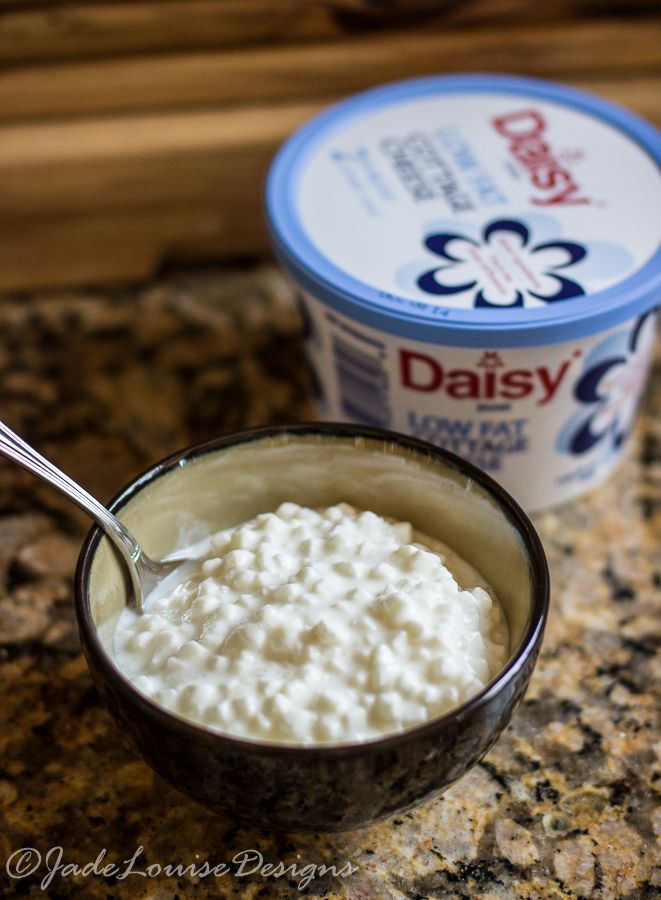Baby feed calculator
Baby Formula Calculator - How Many Ounces to Feed Baby Chart
Created by Aleksandra Zając, MD
Reviewed by Dominik Czernia, PhD and Jack Bowater
Based on research by
National Health and Medical Research Council of Australian Government “Infant Feeding Guidelines: information for health workers“ (2012)See 1 more source
Stanford Children's Health “Feeding Guide for the First Year“
Last updated: Oct 24, 2022
Table of contents:- What is infant formula?
- Newborn baby formula feeding charts
- How to use the baby formula calculator?
- How much milk should my baby drink? How do I know it's not enough/too much?
- FAQ
If you are a new parent, or are about to be, you've probably wondered, "How much milk should my baby drink?" - and the baby formula calculator has got you covered!
We all know that every baby is a special and has their own eating needs; still, it's good to get an idea of where your baby should be with baby formula feeding charts. The calculator finds the amount of infant formula to be given per day so that you can spend more time with your newborn. 👶
We try our best to make our Omni Calculators as precise and reliable as possible. However, this tool can never replace a professional doctor's assessment. If any health condition bothers you, consult a physician.
What is infant formula?
Although pediatricians recommend exclusive breastfeeding for the newborn's first six months, there are situations where you may have to give baby formula to your child.
Baby formula (or just formula) is a special dietary product meant for feeding babies. It is usually made from cow's milk, although you can find goat milk-based baby milk. The animal milk is first treated so that it is suitable for babies. You should not feed your baby regular cow's milk instead of infant formula - small babies (up to one year old) cannot digest untreated cow milk properly, which can lead to health problems. Cow's milk also lacks the right amount of important nutrients, like vitamin C and iron, which can lead to iron-deficiency anemia. Formulas, on the other hand, are often enriched with iron together with DHA and ARA (docosahexaenoic and arachidonic acids), fatty acids that support baby brain development.
Cow's milk also lacks the right amount of important nutrients, like vitamin C and iron, which can lead to iron-deficiency anemia. Formulas, on the other hand, are often enriched with iron together with DHA and ARA (docosahexaenoic and arachidonic acids), fatty acids that support baby brain development.
There are more formula types available on the market - like soy, sheep's milk, and almond 'milk'. You can also find baby milk for special tasks, such as extensively hydrolyzed formulas (meaning the proteins have already been broken down), formulas for premature babies, or formulas that help those who suffer from acid reflux. You should only use special formulas if your pediatrician has recommended them to you. If you think the formula you are currently using is not suitable, talk to your doctor or midwife, and only after that should you try changing the formula.
Newborn baby formula feeding charts
Our baby milk calculator is based on the Australian and American recommendations on infant feeding in the first year of their life. We present these recommendations as simple charts so that you can quickly get an idea of how much and how often your baby should be fed.
We present these recommendations as simple charts so that you can quickly get an idea of how much and how often your baby should be fed.
How much milk should a baby drink per day?
Age | Amount of formula per day |
|---|---|
1-4 days old | 30-60 ml/kg (1-2 oz/kg) |
5 days - 3 months old | 150 ml/kg* (5 oz/kg) |
3-6 months old | 120 ml/kg (4 oz/kg) |
6-12 months old | 100 ml/kg (3-4 oz/kg) |
*Some infants may require 180-200ml/kg (6-8oz/kg)
Baby formula feeding chart - how often they should be fed?
Age | Approx. amount of formula per feeding | Number of feedings per day |
|---|---|---|
Newborn | 60-90 ml (2-3 oz) (may be between 15-60ml (0. | 8-12 times (every 2-3 hours) |
1 month | 60-120 ml (2-4 oz) | 6-8 times (every 3-4 hours) |
2 months | 150-180 ml (5-6 oz) | 6-7 times (roughly every 3-4 hours) |
4 months | 120-180 ml (4-6 oz) | 5-6 times (roughly every 4-5 hours) |
6 months* | 180-240 ml (6-8 oz) | 5-6 times (roughly every 4-5 hours) |
7-9 months | 180-360 ml (6-11 oz) | 3-5 times (roughly every 5-8 hours) |
10-12 months | 180-330 ml (6-10 oz) | 3-4 times (roughly every 6-8 hours) |
*Introduction of solid foods
How to use the baby formula calculator?
If you're still asking yourself how much milk should a baby drink, our calculator has got you covered.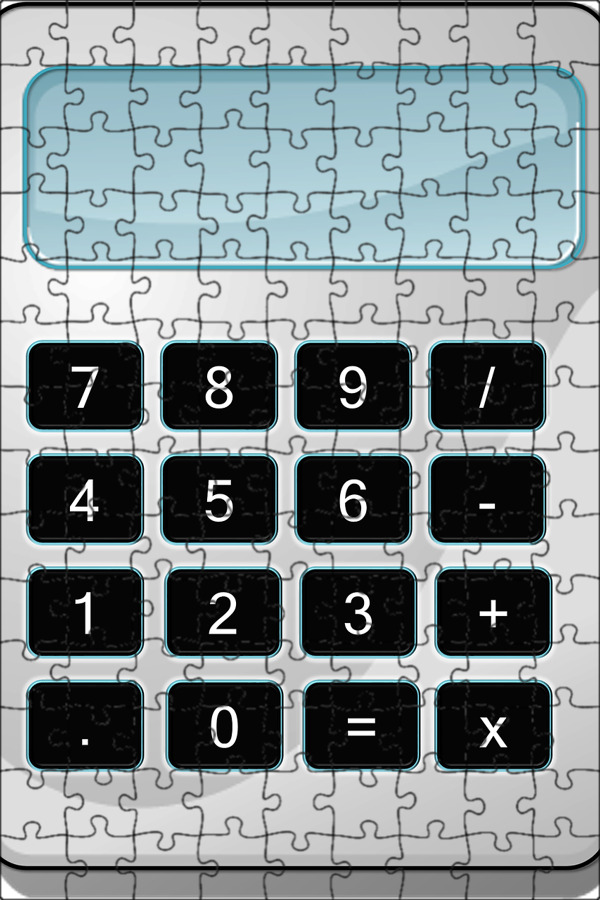 It will count the amount of infant formula that your child should drink per whole day (24 hours), based on their age and weight, and also provide you with suggestions of the volume of one portion and the frequency of feeding. Let's see how it works!
It will count the amount of infant formula that your child should drink per whole day (24 hours), based on their age and weight, and also provide you with suggestions of the volume of one portion and the frequency of feeding. Let's see how it works!
- Look at the calculator panel on the left side of the page.
- Input the baby's age.
Monthsare the default age unit, but if you've got a newborn at home, switch it toDays. You can also use other time units. - Provide the child's weight. You can switch freely between
kg,lband smaller units. Make sure you check the baby's percentile in the weight percentile calculator, too. - You get your results at the bottom of the baby formula calculator. You'll see the amount of baby milk to give per one day, (approximately) how much formula the baby will drink in a sitting, and how many times a day the baby should be fed.
- Remember, the results are approximate and give you a general overview of the baby's feeding.
 Every baby is unique and so are their feeding needs.
Every baby is unique and so are their feeding needs.
How much milk should my baby drink? How do I know it's not enough/too much?
There is one important thing to note - the baby formula calculator is not an oracle. The tool should give you an idea of the amounts of baby milk your child should eat, but there are no strict ranges. You may want to use the baby's milk intake calculatorto get an estimate of your baby's requirement. Most children will change the amount they eat from feeding to feeding so they always get enough. So, learn to understand your baby's body language. When they become distracted during bottle-feeding and start to fidget - they've probably had enough. On the other hand, if the bottle is finished and your baby is still smacking their lips, sticks their tongue out, or sucks everything they can get their mouth on, they might still be hungry. Learning these signs takes time, but it strengthens the bonds between the two of you. ❤️
❤️
Too much food?
If your child seems hungry and is craving baby formula all the time, you should discuss it with your pediatrician or midwife. You should also pay attention to your feeding habits, as overfeeding can lead to obesity in the future (check out the BMI percentile calculator for kids for more info). Sometimes pacifiers are used to soothe babies after a proper feeding.
Important - this doesn't apply to newborns. In their case, it's best to feed them on demand, even if it's ten or fifteen times a day. As they grow up, newborns will develop their own infant formula eating scheme.
Too little food?
If your child never meets the 'goals' of the baby formula feeding chart, you should seek medical advice as well. It might be that your baby just like that, but it could also be some kind of health disorder. A particular red flag arises if a baby has trouble gaining weight. Typically a child should double theirbirth weight by 5 months old and triple it by a year old.![]() **. If this doesn't happen, always talk to a pediatrician, as it might a sign of an underlying condition. To help babies grow, doctors often recommend frequent feeding, even if that means waking up a sleeping child.
**. If this doesn't happen, always talk to a pediatrician, as it might a sign of an underlying condition. To help babies grow, doctors often recommend frequent feeding, even if that means waking up a sleeping child.
Signs of a well-fed child:
- Meets the growing-up goals and progresses proportionately on their pediatric infant growth charts;
- Develops properly - neither you nor the pediatrician, who sees baby regularly, notice anything out of the ordinary;
- Drinks the infant formula gladly but doesn't always act hungry; and
- Wet diapers - a newborn should have 2-3 wet diapers daily up to 5 days old. After that, they should have 5-6 diapers. Wet diapers are a good indicator of the baby's nutrition state.
Always seek medical advice if anything in your baby's eating habits or their behavior concerns you.
FAQ
How much formula should I give to a 3-week old baby?
A 3-week old baby should eat approximately 150 ml (5 fl oz) per kilogram of its body weight per whole day.
To find the total amount of formula needed for the day, you should multiply the baby's weight in kilograms by 150 ml or 5 fl oz. Every baby is different and has its own needs. Always seek medical advice if anything in your baby's eating habits or behavior concerns you.
How do I count baby formula amounts per day?
To count baby formula amounts per one day, you should multiply the baby’s weight by their recommended daily intake by age. The quantities of formula per kilogram are:
Age | Amount of formula per day |
|---|---|
1-4 days old | 30-60 ml/kg (1-2 oz/kg) |
5 days - 3 months old | 150 ml/kg* (5 oz/kg) |
3-6 months old | 120 ml/kg (4 oz/kg) |
6-12 months old | 100 ml/kg (3-4 oz/kg) |
*some infants may require 180-200ml/kg (6-8oz/kg)
Every baby is different and has its own needs. Always seek medical advice if anything in your baby's eating habits or its behavior concerns you.
Always seek medical advice if anything in your baby's eating habits or its behavior concerns you.
How do I count baby formula amounts per feeding?
To count baby formula amount per one feeding, you simply divide the formula per whole day by the number of feedings.baby formula amount per feeding = (formula per day)/(number of feedings)
Can I use two different types of baby formula?
Overall, it is safe to give your baby more than one type of formula, just follow the mixing instructions. So if you're thinking of changing the formula because of availability, price, or preparation reasons, you can do so. Some babies might not like the new formula taste, so mixing two formulas in varying proportions at the beginning can help your baby get used to the new flavor.
Every baby is different and has its own needs. Always seek medical advice if anything in your baby's eating habits or behavior concerns you.
Aleksandra Zając, MD
Baby's age
Baby's weight
Check out 16 similar pediatric calculators 🧒
Adjusted ageAmoxicillin pediatric dosageAPGAR score… 13 more
Baby's Milk Intake Calculator
Created by Komal Rafay
Reviewed by Wojciech Sas, PhD and Jack Bowater
Last updated: Oct 12, 2022
Table of contents:- Baby's milk intake calculator
- How to calculate milk intake for a baby?
- Baby's milk intake chart
- Baby's milk intake by weight
- FAQ
The baby's milk intake calculator is a worry-free tool to help all the mothers who want to calculate the milk intake for their baby according to the baby's age, weight, and feeding habits.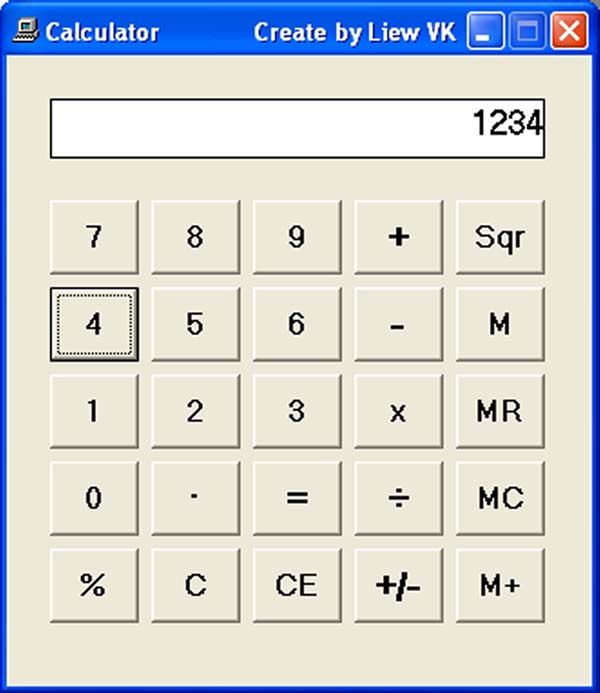
If you are a parent to a newborn, you have definitely wondered, "How much milk does my baby need?", "How to calculate milk intake for my baby?" or maybe you know all that and are just looking to make a baby's milk intake chart. Worry no more in any of these cases because we have it all for you.
If you are a parent, some other noteworthy calculators for you to look at are:
- Weight percentile calculator;
- Maintenance fluids calculator; and
- Baby formula calculator.
Baby's milk intake calculator
The baby's milk intake calculator is a hassle-free tool that helps you estimate the amount of milk needed by your baby in their early months.
Babies need proper feeding, whether it's breast milk or formula milk, and this intake depends on their age, weight, and the number of feedings they require per day.
Our calculator requires the weight of the baby, preferably in kilograms, but if you have it in any other unit (say, pounds or ounces), worry not. You can always use our pounds and ounces calculator to convert to the unit of your convenience. The next important thing you need is your baby's age in months, and, lastly, you need to record the number of feedings your baby requires during a day.
You can always use our pounds and ounces calculator to convert to the unit of your convenience. The next important thing you need is your baby's age in months, and, lastly, you need to record the number of feedings your baby requires during a day.
Based on these variables, you will find out the amount of milk the baby needs during the whole day and the amount per feeding.
🙋 Are you nursing? The breastfeeding calorie calculator may be of help.
How to calculate milk intake for a baby?
The baby's milk intake calculator performs two different calculations. The first one finds the total amount of milk needed by the baby during the day and the second one computes the amount of milk per serving.
Since we are using both age and weight, the formula to evaluate a baby's milk intake is:
Required milk=Baby’s age equivalence×Baby’s weight\text {Required milk} = \text {Baby's age equivalence} \times \text{Baby's weight}Required milk=Baby’s age equivalence×Baby’s weight
where:
- Baby’s age equivalence \text {Baby's age equivalence}Baby’s age equivalence - An estimated series of numbers used as constants for various age groups.

The formula to determine the milk amount per serving is:
Milk per serving = Required milk / Number of servings \text {Milk per serving = Required milk / Number of servings}Milk per serving = Required milk / Number of servings
So, all that you need is your baby's weight, age, and the number of feedings that he requires in a day. For this purpose, you might already be maintaining a chart, and, if not, it's never too late to start keeping your baby's milk intake chart.
Once you have this information, please place them in the formula to get your results.
For instance, your baby is 2 months old\text {2 months old}2 months old, weighs 4 kg\text {4 kg}4 kg, and needs 888 feedings per day. The total amount of milk required during the whole day is 480 ml480 \text{ ml}480 ml, which means 60 ml60 \text { ml}60 ml of milk per feeding.
The baby's age equivalence in terms of milk requirement is given in the table below:
Age | Required milk | |
|---|---|---|
Newborn | 60 ml per kilogram per day | |
< 1 month | 180 ml per kilogram per day | |
1 - 3 months | 150 ml per kilogram per day | |
3 - 6 months | 120 ml per kilogram per day | |
6 - 9 months | 100 ml per kilogram per day | |
9 - 12 months | 90 ml per kilogram per day |
One important thing to keep in mind is that the default units used in the formula to calculate baby's milk intake needs are kilograms (kg) for weight, months for age, and milliliters (ml) for the amount of milk.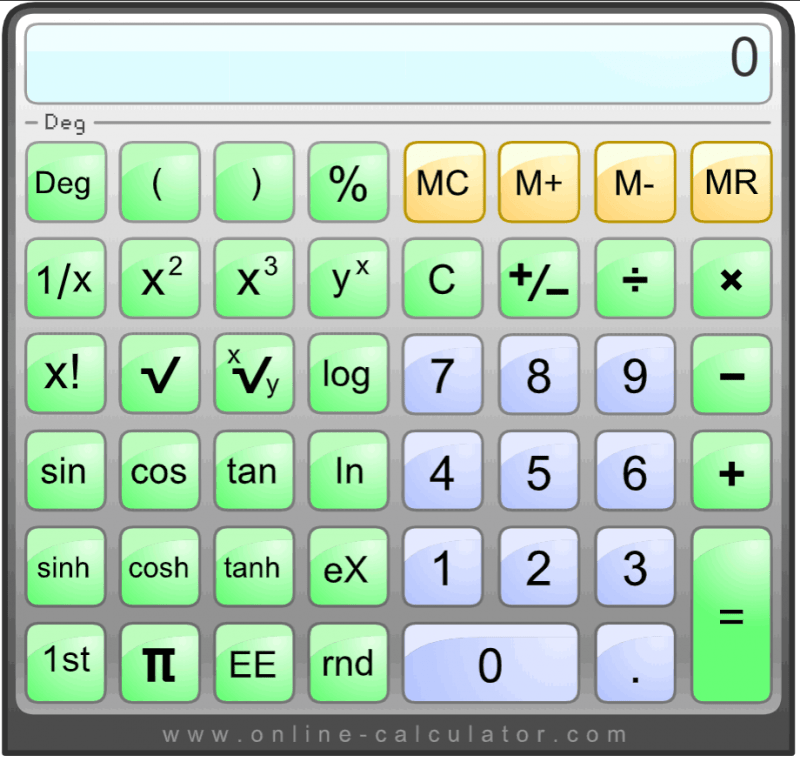 Even though you have the freedom to choose any unit, remember to select appropriate units for all variables if you want to perform the computations by yourself. For instance, if you have your baby's weight in ounces, then it would be wise to use fluid ounces for milk quantity.
Even though you have the freedom to choose any unit, remember to select appropriate units for all variables if you want to perform the computations by yourself. For instance, if you have your baby's weight in ounces, then it would be wise to use fluid ounces for milk quantity.
Generally, an infant requires at least 8-12 feedings daily, after every two to three hours, and this amount decreases with the passage of time as the baby develops a proper sleeping schedule.
Baby's milk intake chart
We need to monitor infants that rely exclusively on breastfeeding. It's worth maintaining a journal or chart in case of the mother's absence due to work or other outdoor chores.
The important things to keep in the baby's milk intake chart are:
- The number of feedings per day for the baby;
- The weekly weight of the baby;
- Age of the baby;
- Sleeping habits of the baby; and
- Amount of milk required during a day and per serving.
Some research suggests that the baby's milk intake will not change between the first six months. Still, each baby has his own needs, so we could estimate the milk intake based on the baby's weight as well as his age.
Still, each baby has his own needs, so we could estimate the milk intake based on the baby's weight as well as his age.
Therefore, these charts can be useful in maintaining a baby's dietary and calorie records.
You can expect a decline in the milk intake any time after six months, especially when the baby starts eating solid food. If you maintain the baby's milk intake chart, you will not have to stress about slight changes in the baby's milk intake.
Baby's milk intake by weight
As a parent, you might be concerned with your baby's milk intake needs, especially if you are a first-time parent, but our baby's milk intake calculator ensures you remain stress-free.
The baby's milk intake varies a lot during the baby's first month. After that, there should be a gradual decrease when the baby starts consuming foods other than milk. There could also be variation in the milk intake based on the weight of the baby, which is what our calculator bases its calculations on.
The variables that influence the milk intake of a baby are:
- Growth rate;
- Age;
- Metabolic rate;
- Activity level;
- Amount of solid/semi-solid food;
- Feeding habit/pattern; and
- Sleeping habits.
FAQ
How much milk does my baby need?
The baby's milk intake depends on his weight, age, and other factors like growth rate and genetics.
But if you want to estimate how much milk is required, you need to multiply your baby's weight by the age equivalence number, which is the average amount of milk required at various ages.
Please refer to the list below:
- A newborn needs 60 ml per kg per day.
- A baby less than 1-month-old needs 180ml per kg per day.
- 1 - 3 months old baby needs 150 ml per kg per day.
- 3 - 6 months old baby needs 120 ml per kg per day.

- 6 - 9 months old baby needs 100 ml per kg per day.
- 9 - 12 months old baby needs 90 ml per kg per day.
When does the baby's milk intake decrease?
The baby's milk intake starts to decrease when he starts taking solid or semi-solid food.
The decline in the baby's milk intake should not be a matter of major concern if he has started eating other foods like fruit or vegetable puree and should be considered a sign of good health.
How much milk does my 1 month old baby need?
Your baby's milk intake should be around 2-4 ounces or 60 - 110 ml, which is comparable to the stomach capacity of a one-month-old baby (typically 2.5 to 5 ounces).
The average milk intake for a 1-month-old baby is 150 ml per kilogram per day. This means whatever the weight of your baby is, all you have to do is multiply it by 150 and you will have the total milk intake during the whole day for your beloved baby.
How much milk does my 7 kg, 5 months old baby girl need?
Your baby needs 840 ml of milk during the whole day.
The required amount for a baby between 3 - 6 months old is 120 ml per kilogram per day. So, if you want to calculate the milk intake by yourself, all you have to do is multiply your baby's weight by 120 and you will get the milk quantity required during the whole day.
You can further divide this amount into amounts per feeding, the formula for which is:
Milk per serving = Required milk / Number of servings
Komal Rafay
Baby's age
Baby's weight
Milk needed during the day
Number of feedings in a day
Milk needed per feeding
Check out 16 similar pediatric calculators 🧒
Adjusted ageAmoxicillin pediatric dosageAPGAR score… 13 more
Calculator for calculating the volume of feeding and nutrition for a child up to 1 year old - Calculators for the development of a child
Published by Updated by
On our website, for your convenience, there is an online calculator for calculating nutrition for children in the first year of life. With it, you can calculate the amount of food required and study a detailed feeding schedule for your baby.
With it, you can calculate the amount of food required and study a detailed feeding schedule for your baby.
Contents
Calculation of the regime and schedule of nutrition for children of the first year of life
Age, months.
123456789101112
Feeding
Natural Artificial Mixed
Weight, gr.
Artificial and mixed feeding
Pediatricians of all countries have long proved that the best food for a baby is mother's breast milk. It contains all the necessary vitamins and nutrients for the child, which favorably affect his growth and development.
It is recommended to breastfeed a child for at least 6-9 months, since at this time all the vital systems of the body are formed, and mother's milk is a reliable protection against various viruses and diseases, contributes to the formation and strengthening of immunity.
In addition, breastfeeding establishes a close psychological bond between mother and child, which lasts throughout life. At these moments, the woman and the baby feel like a single whole, for the mother, these memories will forever remain the warmest and most reverent. Breastfeeding also has a positive effect on the health of the woman herself, contributing to the speedy normalization of various body functions after childbirth.
At these moments, the woman and the baby feel like a single whole, for the mother, these memories will forever remain the warmest and most reverent. Breastfeeding also has a positive effect on the health of the woman herself, contributing to the speedy normalization of various body functions after childbirth.
The interval between breastfeeding may be different, here among pediatricians there is no consensus: some say that the baby should be fed on demand, while others are convinced that the break should be at least 3-4 hours, and at night at least 6. However, only you know what is best for your child, so it's up to you.
We should not forget that the composition of mother's milk may vary depending on the products that a woman consumes, so it is important to control your diet, because your baby's health depends on it. Observe the daily regimen, sleep enough, reduce physical activity, try to eliminate the manifestations of all kinds of stress, remember that your internal state and mood are completely transmitted to the baby.
Features of feeding
To check whether the child receives enough breast milk, control weighing is carried out. In case of its deficiency, illness of the mother or impossibility for one reason or another to breastfeed, the child is transferred to mixed or artificial feeding.
Mixed feeding is when formula is added to breast milk. That is, first, the mother puts the baby to the breast, and then feeds him with a mixture. It is important to remember that there must be at least three breastfeeds during the day, otherwise lactation may stop and the child will have to be transferred to artificial feeding.
Artificial feeding differs from mixed feeding in that the baby does not receive breast milk at all, but eats only milk mixtures. Their range today is quite wide, and the quality is getting better every year, because the number of manufacturers is constantly increasing, in order to withstand the competition, you have to defend quality. Adapted milk formulas are as close as possible in composition to mother's milk, but it is important to choose the mixture that is right for your child without causing allergic reactions and digestive disorders.
Be serious about your choice of baby utensils, the wrong nipples can ruin your bite, and poor quality materials can be toxic. Children's dishes should be washed immediately after eating. When the baby is still very small, pour boiling water over it, but as the child grows up, it is enough just to wash the dishes with hot water, because excessive sterility interferes with the development of immunity.
Features of complementary foods
As a rule, infants who are on mixed or artificial feeding start feeding earlier, at 4-5 months of birth. Babies who eat only mother's milk are introduced to complementary foods after six months. Some experts identify three components of a child's readiness for complementary foods:
- ability to sit;
- presence of at least 2 teeth;
- food interest.
However, everything is relative, because some children have teeth at 3 months, while others have their first teeth only after a year! The same applies to the child's ability to sit independently.
New foods should be introduced into the baby's diet gradually, giving him the opportunity to adapt to them. After breastfeeding or after taking formula, offer your baby 1-2 teaspoons of complementary foods. Give the baby one product at a time, do not mix several at once, so it will be easier to determine the source of an allergic reaction if one occurs. In case of an allergy, the product that caused it should be excluded from the diet and try to return to it after a few weeks. The rate of complementary foods should be increased each time, thus reaching the complete replacement of one of the feedings.
Start with vegetable purees, then offer your baby cereal, later you can try lactic acid products, meat and fruits.
Until the age of 7-8 months, food should be grinded very carefully, since the baby cannot chew it yet, a blender is the best for this.
How to drink a child under one year old?
Following the WHO recommendations, it is not necessary to supplement a child who is fully breastfed before the start of complementary feeding, since mother's milk contains all the substances the baby needs. With the start of complementary foods, the amount of breast milk consumed by the baby decreases, but the need for fluid must be met. The question arises: how to supplement the child?
With the start of complementary foods, the amount of breast milk consumed by the baby decreases, but the need for fluid must be met. The question arises: how to supplement the child?
Contrary to our parents and grandmothers, today's pediatricians do not recommend drinking milk for children under 1 year of age, because in addition to the risk of developing allergies, it also prevents the absorption of iron.
Fruit juices can be started after 6 months, but they must be diluted with water, in a ratio of 1:10! After all, juices contain fruit acids and natural sugar, and this negatively affects children's teeth.
Herbal teas are best used only when prescribed by a doctor. If this is not necessary, it is better to refuse them.
However, normal water must be present in the baby's diet, it is better if it is special bottled water for children, but remember, it is not sterile, so do not forget to boil it before offering it to the baby.![]()
Nutrition rules
It is important not only to choose the right type of feeding, but also to adhere to the basic rules.
The following principles of nutrition for children of the first year of life can be distinguished:
- frequent meals;
- complete satisfaction in digestive substances;
- balance of all nutrients;
- compliance with physiological changes and metabolic functions of the body;
- biological and chemical quality of food;
- variety of diet;
- culinary and technological processing of products according to age requirements;
- Compliance with chewing apparatus.
The diet of children in the first year of life depends on many factors. There are children who sleep more, and there are fidgets who are ready to play for hours. Under these natural biorhythms, you need to adapt when drawing up a feeding schedule.
Read more:
Rate the author
Nutrilon 1Premium 400g
Powdered adapted milk formula.
Breastfeeding is preferred for feeding young children. Nutrilon® 1 Premium is used to feed a baby when breastfeeding is not possible, or as a supplement to breast milk.
Consult a specialist before using the mixture.
Preparation
Wash your hands and sterilize the bottle and nipple.
Boil water. Cool it down to 40°C.
According to the feeding chart, measure the exact amount of water and pour into a sterilized bottle. Do not reuse boiled water.
Be sure to use the supplied measuring spoon. Spray the measuring spoon provided with boiling water and dry it. Remove the pile of dry mix with the back of a knife.
Add the exact number of scoops of the mixture to the water. Adding more or less than the recommended amount of formula may be harmful to your baby's health.
Close the bottle and shake well until the mixture is completely dissolved. Remove the cap and put the nipple on the bottle.
Check the temperature of the finished mix on the inside of your wrist (37°C).
Feeding chart
For formula-fed babies (unless otherwise advised by a specialist):
| Child's age | Number of feedings per day | Volume of water, ml | Number of scoops |
|---|---|---|---|
| 0-14 days | 6-7 | 90 | 3 |
| 3-8 weeks | 6-7 | 120 | 4 |
| 2 months | 6 | 150 | 5 |
| 3 months | 5 | 180 | 6 |
| 4 months | 5 | 180 | 6 |
| 5 months | 4-5 | 210 | 7 |
| C 6 months | 3-4 | 210 | 7 |
100 ml Nutrilon® 1 Premium = 90 ml water + 3 scoops powdered formula
1 scoop = 4.5 g powdered formula
including the age, weight and appetite of the baby. Our chart provides recommendations on how often to feed your baby formula based on their age. Of course, these are only approximate recommendations. For premature babies or babies born with low birth weight, they will be different.
Our chart provides recommendations on how often to feed your baby formula based on their age. Of course, these are only approximate recommendations. For premature babies or babies born with low birth weight, they will be different.
Important!
- Prepare meals right before eating!
- Do not use leftover food for later feeding!
- Do not heat the mixture in the microwave oven, to avoid the formation of hot lumps of the mixture.
- Strictly follow the recommendations for the amount of mixture when preparing and do not add anything to the prepared mixture.
- New formula should be introduced into the baby's diet gradually. Consult with a specialist before introducing the product. If you have additional questions, please contact the Nutriclub expert line for moms.
Changing from one mixture to another
The baby's digestive system needs time to adapt to the assimilation of a new milk mixture - it is possible to change the activity of some enzymes, the rate of processing of the components of the mixture, and the nature of the stool also changes.
Start with very small amounts of any new infant formula. Mix old and new formula in separate containers and mix just before feeding in one bottle.
As the amount of new milk formula is increased, the volume of the usual formula is reduced. So the baby's digestive system will gradually "learn" to assimilate a new product, your baby will gradually get used to the new taste.
In addition, you will be able to adequately and timely assess the reaction of the baby to the new milk formula.
| Introduction date | The amount of the mixture for 1 dose, ml | Multiplicity of reception | Amount per day, ml |
|---|---|---|---|
| 1st day | 30 | 1 | 30 |
| 2nd day | 30 | 2-3 | 60-90 |
| 3rd day | 30 | 5-6 | 150-180 |
| 4th day | 60 | 5-6 | 300–360 |
| Day 5 | 100 | 5-6 | 500-600 |
| 6th day | 150 | 5-6 | 750 |
The introduction of a new mixture is an important moment in the nutrition of the baby, and in order for it to be successful and you have not missed anything, do not forget to consult with a specialist on this issue.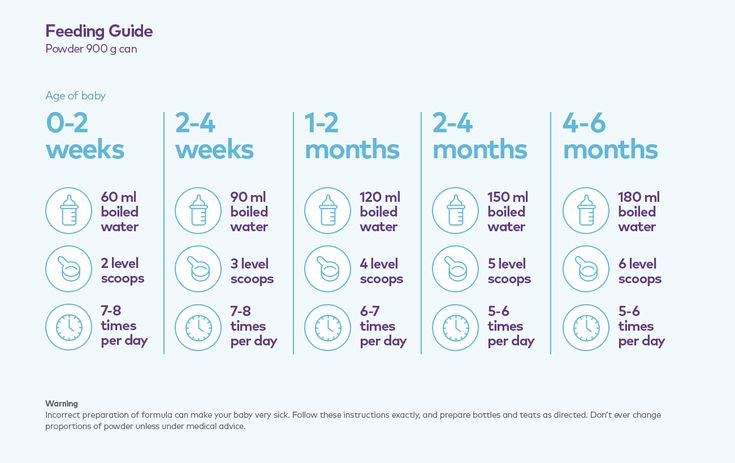
Composition
Demineralized whey, blend of vegetable oils (palm, rapeseed, coconut, sunflower, Mortierella alpina), lactose, skimmed milk, prebiotics (galactooligosugar, fructo-oligosugar), whey protein concentrate, minerals, fish oil*, vitamin complex, choline, soy lecithin, taurine, trace elements, nucleotides, inositol, L-tryptophan. May contain traces of gluten**.
*fat component of milk formula was developed on the basis of data on the fatty acid composition of breast milk
Nutritional information
Click for nutrition information.
Storage
- Store unopened cans at temperatures from 0 to +25 degrees and relative humidity not more than 75%.
- Once opened, store tightly closed in a cool, dry place, but not in the refrigerator.
- Refrigerator humidity may be higher than recommended. As a result, the mixture can become damp, as well as absorb the odors and microflora of the products that are in the refrigerator next to the mixture.

- Use contents of opened jar within three weeks.
- To store the mixture, choose a place as far as possible from flour and cereal products in order to avoid contamination of baby food by insects.
- The company can guarantee the safety of the quality of baby food only if all the conditions of storage and preparation of products are observed. If these conditions are violated, deviations from safety standards are possible, which can lead to a deterioration in the health of the child.
1. What is palm oil used for?
Palm oil is an important component of a mixture of oils that are easily and quickly absorbed by the child's body.
Palm oil is needed to bring the fat content of the formula closer to the fat content of breast milk. Palmitic acid, which is rich in palm oil, is an energy supplier for a growing body, like palmitic acid in breast milk.
Palm oil is obtained from the pulp of the fruit of the oil palm tree, after which it undergoes multi-stage purification specifically for baby food. Then it is added to a mixture of other oils in the required amount to bring the fat component of the milk mixture closer to the fat composition of breast milk.
Then it is added to a mixture of other oils in the required amount to bring the fat component of the milk mixture closer to the fat composition of breast milk.
The use of palm oil is permitted in the production of baby food in accordance with the legislation of the Russian Federation and the Customs Union.
2. Is there enough vitamin D in the mixture to prevent rickets?
If a baby is fully bottle-fed with Nutrilon® 2 Premium formula and drinks 1 liter of formula per day, he receives a prophylactic dose of vitamin D along with the formula. But also a specialist may recommend additional intake of vitamin D.
3. What is taurine?
Taurine is a vital, non-essential (essential) amino acid, especially necessary for the normal development of the central nervous system and muscles. Taurine reserves in the body are limited, which determines the need for its intake with food. After childbirth, its concentration in mother's milk reaches high values.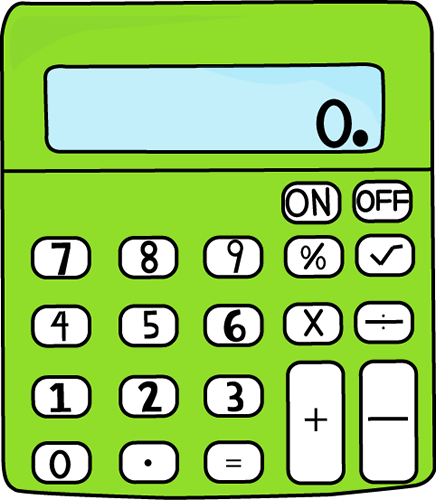 The baby receives the first portion of taurine intended by nature with mother's milk. After establishing this fact, taurine began to be added to infant milk formulas for artificial feeding.
The baby receives the first portion of taurine intended by nature with mother's milk. After establishing this fact, taurine began to be added to infant milk formulas for artificial feeding.
4. What are nucleotides?
Nucleotides are the building blocks of cell DNA and are especially necessary for a growing organism. Important for premature babies and during illness. There are opinions that when using nucleotides in children, weight gain increases, indicators of physical and neuropsychic development improve, the maturation of nervous tissue and the formation of organs of vision occur faster. It has been scientifically proven that nucleotides have a beneficial effect on the development of the small intestine, increase the number of beneficial bifidobacteria in the composition of the intestinal microflora.
5. What is soy lecithin?
Soy lecithin is a mixture of phospholipids isolated from soybean oil obtained from natural (non-genetically modified) raw materials.

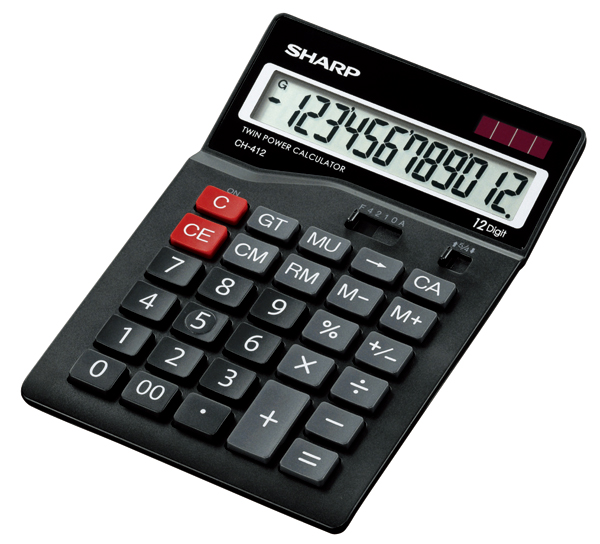 5-2oz) in their first few days)
5-2oz) in their first few days)
